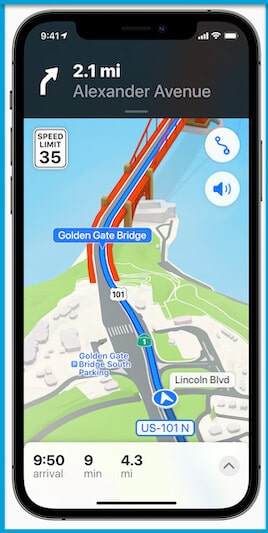Plus, Apple updates its Maps and standalone Gmail campaigns are becoming read-only on July 1.
Good morning, Marketers, you asked the questions, I got some of the answers.
A few weeks ago we reported on YouTube’s “Right to Monetize,” the ToS change that enables the company to run ads on content from channels that aren’t participating in the YouTube Partner Program. Some of you reached out to me with your questions, I passed them along to YouTube, here’s what I’ve learned:
- There is no way for creators to opt out of these ads.
- YouTube will not run ads on live streams or embedded videos.
- We can expect YouTube’s ad inventory to increase as a result of this change.
- If demand stays stable, the expanded inventory would result in more efficient campaigns.
It’s possible that demand may increase as more sectors of the economy resume operating at pre-pandemic levels, but my prediction is that this should mean lower ad prices, if it means any change at all for ad spend. Please DM me @geochingu or email me (subject line: Remember to like and subscribe) at gnguyen@thirddoormedia.com if you notice any changes that you think are a result of YouTube’s new ToS.
George Nguyen,
Editor
Standalone Gmail campaigns will become “read only” beginning on July 1
In January, Google Ads emailed advertisers informing them that they will not be able to create new standalone Gmail campaigns or edit existing ones starting on July 1, 2021. Gmail campaigns will continue to serve for “an extended duration,” according to the email notice, and advertisers will still be able to pause or delete their Gmail campaigns.
Moving forward, advertisers will have to create a Discovery campaign if they want their ads to show up on Gmail.
iOS 15 improves Apple Maps and adds AR walking directions

Apple’s iOS 15 update improves its Maps app with enhanced details in cities for neighborhoods, commercial districts, elevation and buildings, as well as a night-time mode and new road colors and labels, the company announced yesterday at its WWDC event. In addition to those enhancements, the company also announced augmented reality walking directions.
Why we care. Apple Maps was considered by many to be a half-baked product when it first launched. It’s been several years and now the company seems to be taking it much more seriously. These features help Apple reach parity with Google Maps, which is important since Google Maps is such a crucial part of the search engine’s local business offerings. If Apple can catch up to Google, or just offer enough reason for users to turn to its own services when searching for local businesses, that could pose a threat to Google’s dominance in the sector.
Google to adjust ad tech after settlement with French antitrust commission
Along with paying a $268 million fine, Google agreed to adjust its ad technology to provide more flexibility and transparency as well as improve the way its Ad Manager services works with rival ad servers and sales platforms.
Google will make two main changes to its ad tech: providing more flexibility and transparency for rivals and publishers. “We will work to create a solution that ensures that all buyers that a publisher works with … can receive equal access to data related to outcomes from the Ad Manager auction,” said Gomri. On the flexibility front, Google will now allow partners to “set custom pricing rules for ads that are in sensitive categories and implementing product changes that improve interoperability between Ad Manager and third-party ad servers.”
Why we care. This decision and Google’s response means it will be easier for publishers to use Google’s ad tech tools and learn from the data–which means potentially more options for publishers using ads to drive revenue and fund content.
Google knows no (indexing) limits, the disappearance of tank man and Zuckerberg continues his beef with Apple
Does Google have an index limit? “In short, no,” said Google’s John Mueller on a recent edition of #AskGooglebot. In the video, Mueller also explained that Google’s algorithm will “generally try to focus indexing on pages that make sense to be indexed.” “So, if it’s a completely new website, we probably won’t go off and index millions of pages; however, if we’ve seen that it’s worthwhile, we’ll be happy to do just that,” he said.
“There are no results for tank man.” Last week marked the 32nd anniversary of the Tiananmen Square protest, which produced the “tank man,” one of the most iconic photographs of all time. The Chinese government blocks distribution of the image and censors discussions around Tiananmen square, but Bing also censored image search results for the “tank man” query, even from IP addresses in the UK and U.S., Vice reported. “This is due to an accidental human error and we are actively working to resolve this,” a Microsoft spokesperson said. The issue seems to be resolved now, but what kind of human error would result in blocking those image results on that particular date?
BTW, here’s how much Google and Apple are taking from you. Love, Zuck. Just a few hours shy of Apple’s WWDC event, Facebook CEO Mark Zuckerberg announced that the social media network will keep paid online events, fan subscriptions and badges free for creators until 2023. “We’re also launching a new payout interface so creators can see how different companies’ fees and taxes are impacting their earnings,” he casually commented on his own post. The Verge has a nice example of the payout interface, and that $0 fee from FB contrasts sharply with Google and Apple’s fees. Facebook does plan to start charging creators at some point, and when it does, it’ll be “less than the 30% that Apple and others take,” Zuckerberg said.
Give your employees the ability to WFH or someone else will

Nearly two in five (39%) workers said they would consider quitting if their employers weren’t flexible about remote work, according to a May survey of 1,000 U.S. adults conducted by Morning Consult on behalf of Bloomberg News. That statistic becomes nearly half (49%) if you just look at millennials and members of Gen Z.
The big takeaway from Bloomberg’s article is right in the headline: “Employees Are Quitting Instead of Giving Up Working From Home.” The top benefits (shown above) may be enough to change workers’ preferences, but what may make this a permanent shift is the labor shortage and senior management’s new position — less than one in five executives said they want to go back to pre-pandemic work routines, according to a PwC survey of 133 executives conducted in January.
I’m assuming professionals are more willing to quit jobs that don’t offer WFH because they’re confident they’ll be able to find a comparable position that does. And, with this preference being so prevalent among the youngest working demographic, the work environments we got used to during the pandemic may closely resemble how companies will operate from here on out.




